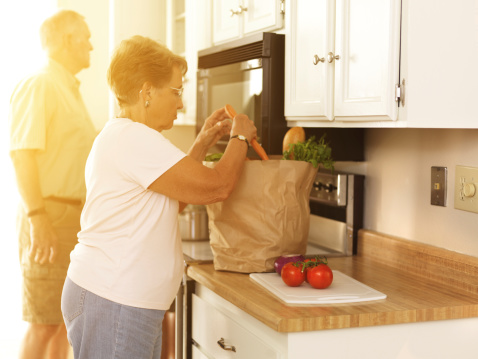Pantry or Refrigerator – Where to Store Common Food Items

Knowing whether to store certain foods in the pantry or the refrigerator can make a big difference in preserving freshness, flavor, and safety—especially for older adults who may be more sensitive to foodborne illnesses. Some foods clearly belong in one place or the other, but others are more nuanced.
Dry goods like rice, pasta, flour, and canned goods are best stored in a cool, dry pantry. These shelf-stable foods don’t need refrigeration and can last for months if kept away from heat and moisture. Unopened oils, peanut butter, and most unopened condiments also do well in the pantry. However, once opened, some items like nut butters and certain oils (like flaxseed or walnut oil) are better refrigerated to prevent spoilage.
Fruits and vegetables are a mixed category. Items like onions, potatoes, garlic, and winter squash should stay in the pantry or a cool, dark cabinet—refrigeration can affect their texture or promote spoilage. In contrast, berries, leafy greens, carrots, and broccoli should always be refrigerated to stay crisp and safe to eat. Tomatoes, bananas, and avocados are best left out on the counter or in the pantry until ripe; refrigeration can alter their flavor and texture.
Eggs, dairy products, meats, and leftovers should always be stored in the refrigerator to prevent bacterial growth. Similarly, after opening items like ketchup, mayonnaise, or salsa, refrigeration is necessary even if they were originally sold on the shelf.
Understanding proper food storage not only helps reduce waste but also keeps food safe to eat, which is especially important for seniors with weakened immune systems. When in doubt, checking labels for storage instructions and using a refrigerator thermometer to ensure a safe temperature (at or below 40°F) are good habits to maintain.
To learn about some of the most common foods that you may be storing incorrectly, from AARP, CLICK HERE.
